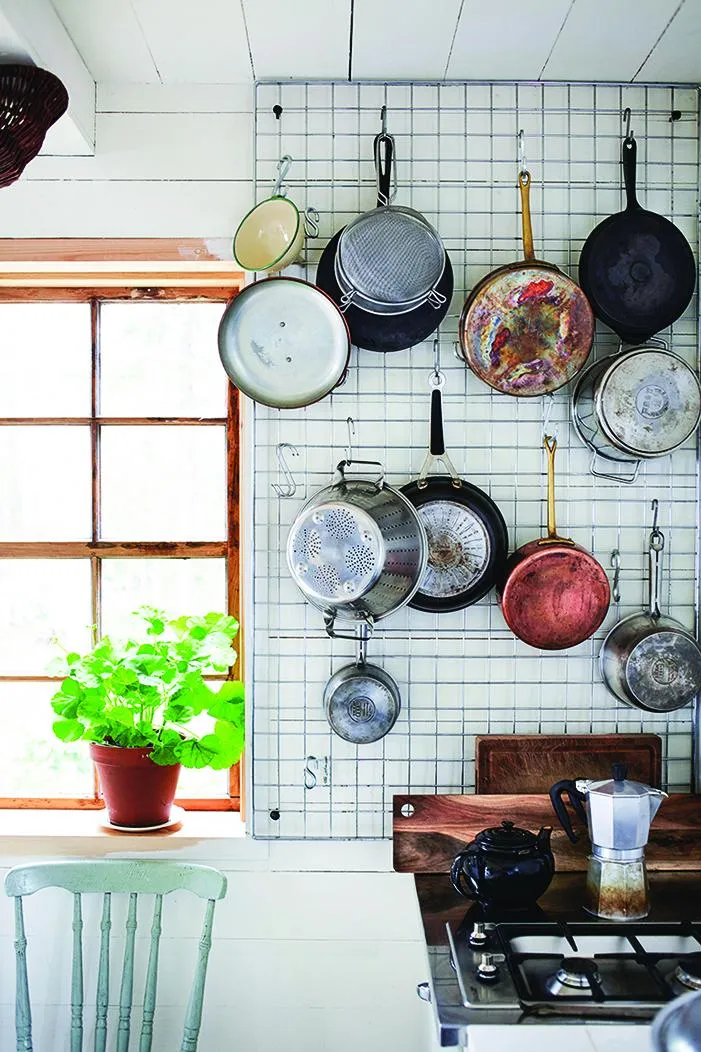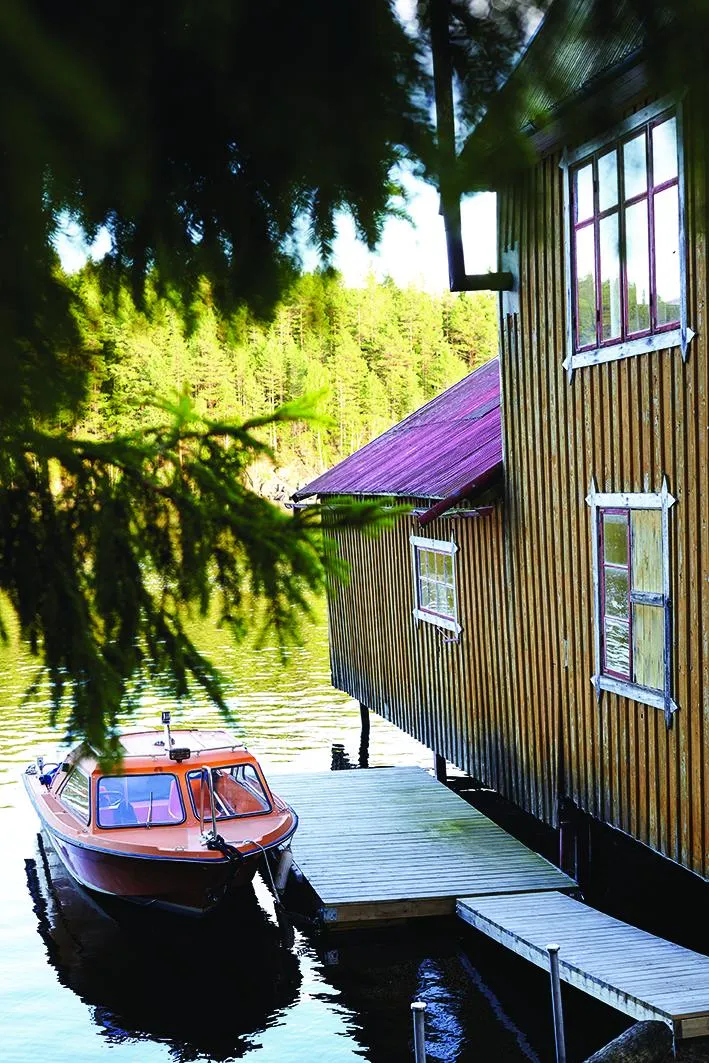The peaceful lakes and forests of Dalarna County in central Sweden have long drawn in visitors from Stockholm and the south in search of somewhere to unwind, to be close to nature and to escape the pressures of city life. Driving towards the small town of Smedjebacken, on the northern edge of Lake Barken, the sight that greets you as the lake swings into view is enough to lift the spirits of any weary traveller. There, nestled on the still water beneath the huge open sky, is a cluster of small islands covered in pine trees. Glimpses of roof or window frame through the greenery reveal that each is the location of a secluded home.
Within this archipelago, with its unmissable yellow boathouse glinting in the sun, is the two-acre private island of Lyckans Ö, the aptly named ‘Happiness Island’, home to the summer house of Carina and Jacob Litorell. The couple live in Stockholm for most of the year, and the house and island – reached by a 10-minute boat trip from the mainland – have become their haven of peace and solitude since acquiring them in 2014.
‘When I arrive here, there is a feeling that nothing can disturb me,’ says Carina. ‘My perception of time changes; everything slows down. The morning starts when there is light, then comes the day, and then the evening. You can slouch around in pyjamas and do whatever you want.’
You might also like a traditional Swedish farmhouse
The timber-clad, green-painted house with its eye-catching battlements, turrets and round windows, was erected at the end of the 19th century for the prosperous Stockholm merchant and engineer Carl de Val. Originally, there was a small cottage on the site that De Val incorporated into his grander building and which today forms the living room of the house. De Val’s love of boats led to the construction of the boathouse and above that, under the dome, he added an atelier for his artist daughter.
Even when first built, the Green House was considered to be very picturesque. Not only is it built almost exactly at the centre of the island, but it also occupies its highest point and from every room, regardless of which way it faces, you can see the lake. ‘Best of all, the house had been completely undisturbed,’ says Carina. ‘Nothing had been ripped out, renovated or modernised. It was pure happiness for us, as we could bring in improvements on the house’s own terms.’
From the start, they decided on a ‘silk-glove’ approach to renovating, aiming at preserving, enhancing and improving what was already there and avoiding over-modernising. The old well was restored, but there is no mains water. The house is heated with woodburners. There is no electricity, with batteries and gas catering for their needs. They also decided to keep nearly all the furniture that came with the house, occasionally upcycling a piece with a coat of egg tempera paint.
Apart from a new zinc roof, the main renovation work was in the kitchen, where they removed an inner ceiling to expose the roof beams, adding 50cm to the ceiling height. Vintage kitchen cabinets and a shelving unit were fitted, along with a renovated old cooking stove, which replaced the original one that was beyond repair. The stainless steel worktops were custom-made to their measurements. As far as possible, Carina and Jacob have tried to restore the house using only sustainable materials and paint.
You might also like a 19th-century Italian summer house
In keeping with the feeling of relaxed simplicity, furnishings have been kept to a minimum with a few rugs, pictures and houseplants bringing a homely touch. Most of the walls are white, the exceptions being their bedroom, which is a warm, dark putty, and the room above the boathouse.
This still bears the remarkable, swirling murals painted by Carl de Val’s artist daughter in the 1920s and is used today as guest accommodation. This comes in handy when the couple have visitors, such as during August’s crayfish parties, when they host a 400m swimming competition around the island. But, for much of the time, they just like to enjoy the peace and solitude.
‘There is such a freedom in being here, knowing you aren’t going to be disturbed unless you want to be,’ says Carina. ‘When I am away, I always dream of being back here.’













